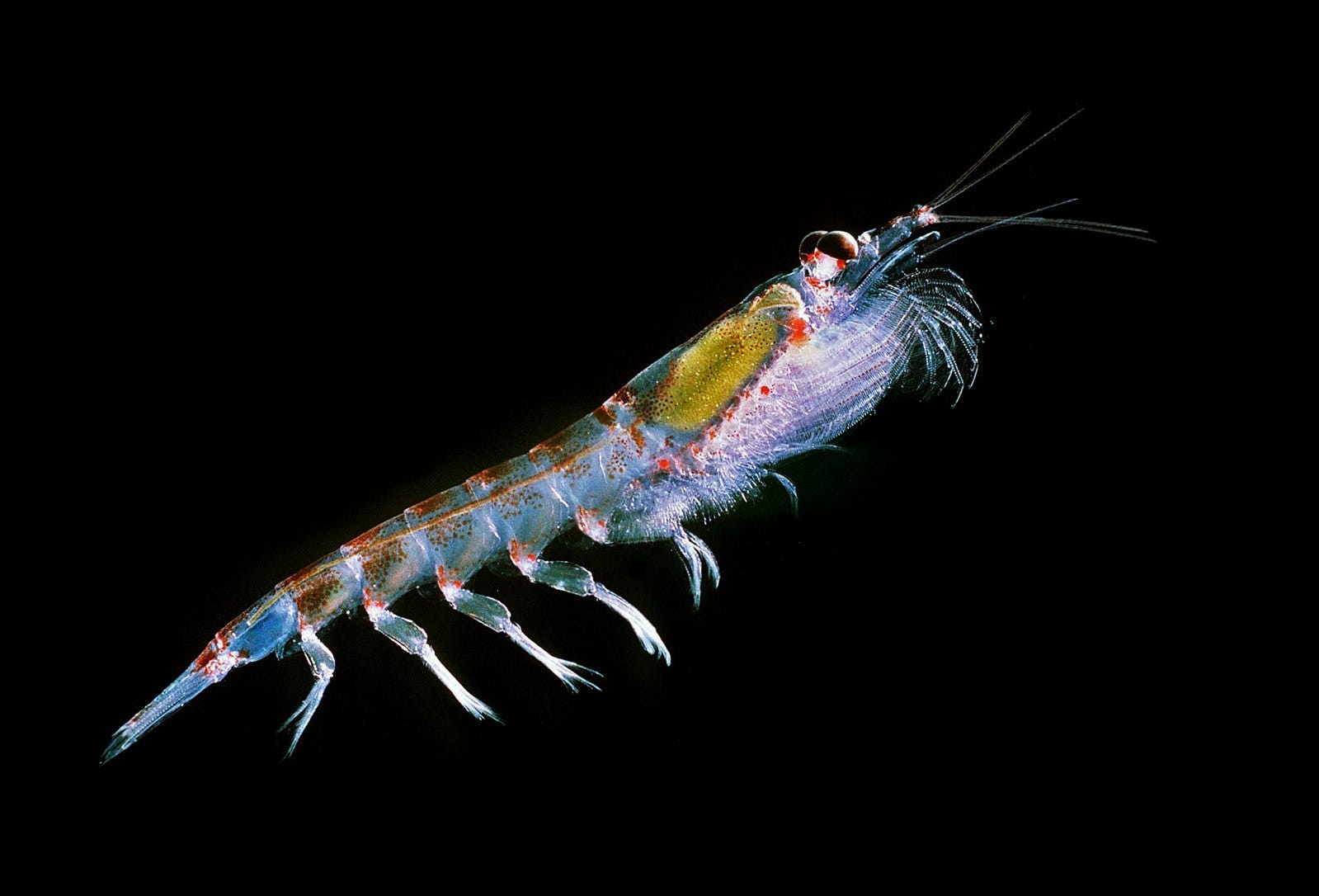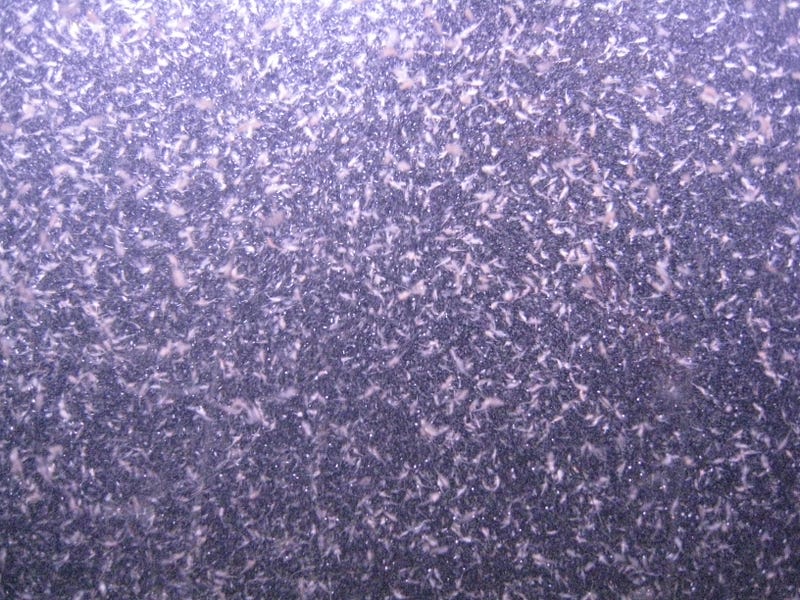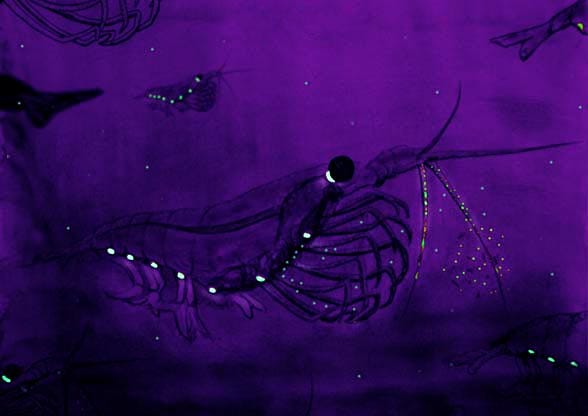
Krill are a taxonomic Order of marine crustaceans. A total of 86 species exist throughout the worlds oceans. They bear a strong resemblance to their relative, the shrimp, but can be differentiated by their visible external gills. However, they also closely resemble another organism from earlier this season: the lanternfish. Krill are heavily abundant, an important part of the marine food web, and all but one species are bioluminescent.
The main difference between krill and lanternfish (besides the fact that one is a vertebrate and the other is not) is in their magnitude. If you recall, total lanternfish biomass is somewhere on the order of 500 million metric tons. However, a single species of krill, the Antarctic krill, Euphausia superba, almost equals that amount on its own. It has one of the largest total biomasses of any species on Earth. Krill are small, usually only a few centimeters in length, though some species can reach 15cm. They congregate in huge swarms numbering in the tens of thousands per cubic meter. Back in Season 5, one of our stories looked at the feeding habits of baleen whales. We discussed how filter feeders still need to find large concentrations of prey in order to feed. The sheer number of krill allow for this to be a viable option for these whales as well as other predators like fish, seals, and even penguins.

Krill also share similar behavioral patterns to lanternfish, such as moving up and down in the water column on a day/night cycle. Bioluminescence is so universal to them as a group that they are sometimes referred to as ‘light-shrimp’. However, studies of them and their luminescent structures indicate that they do not come by this talent naturally. Rather, they ‘borrow’ it through their diet. The light-emitting compound in krill is similar to that found in dinoflagellates, the subjects of last week’s story. These make up a good portion of the krill diet.
Krill possess highly complex structures for the use of their bioluminescence. Their light organs are not static structures, but can move and rotate using the organism’s muscles. Each organ has a concave reflector at the back and a focusing lens at the front. The artist’s rendering below shows their approximate location on the krill body. The structures are so highly developed that comparisons have been made with human technology, such as a flashlight.

What function does krill bioluminescence have? Well, if you’ve been reading the rest of Season 8, it probably won’t be much of a surprise when you read that we’re not sure. For many bioluminescent organisms, studying their behavior in situ can be difficult, if not impossible, so for now we only have educated guesses. Those hypotheses are also similar to the functions proposed for lanternfish: countershading camouflage, assistance with schooling (or in this case swarming) behavior, and mating identification or display. However, if their functions are truly so similar, it is another example of how useful bioluminescence can be, to the point where it has developed numerous times over multiple unrelated taxa. This is called convergent evolution, and I think this particular instance is quite interesting considering they are both so different (a fish and a crustacean) and yet so alike.
With only two stories left, Season 8 will soon be coming to a close. I hope you have enjoyed this journey to some of the farthest reaches of the globe and the deepest parts of the oceans. As always, please pass these along to your friends who appreciate the natural world. Feedback is also appreciated in whatever manner you wish, including writing and content. Let me know what subjects you would be interested in me covering in future seasons of Nature Stories.